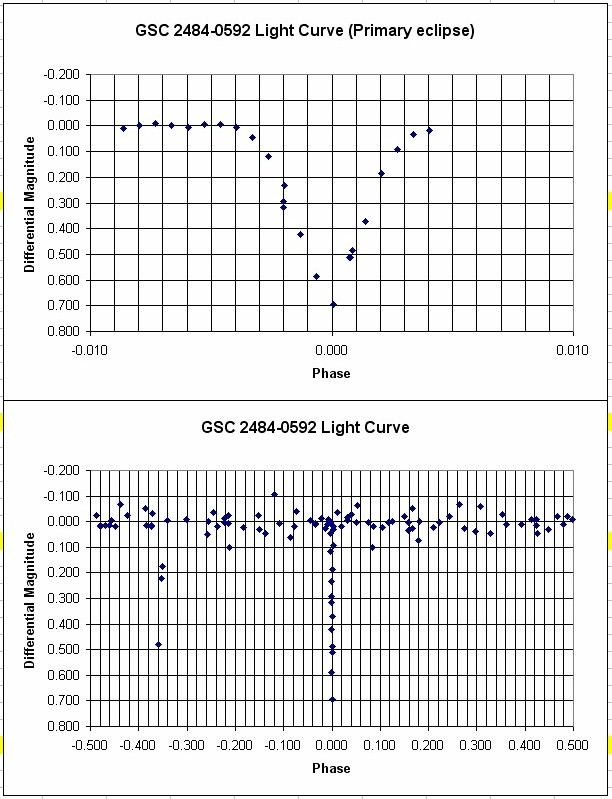|
"Peremennye Zvezdy", Prilozhenie, vol. 6, N 14 (2006) |
A Bright New Eclipsing Variable
D. Davies
USA,Torrance
| ISSN 2221–0474 |
Received: 8.04.2006; accepted: 27.04.2006
(E-mail for contact: Donald.Davies@gmail.com)
| ||||||||||||||||||||||
Remarks: |
| Primary eclipse at JD 2453756.8764 drops to 52% brightness (I-band), duration ~5.5
hrs.
Secondary eclipse at JD2453745.7489 drops to ~56% brightness (V-band), duration
10-16
hrs.
All my measurements were made in I-band, the spectral response of the filter/CCD combination is similar to Cousins I-band with reduced response on the long wavelength end. Discovered in an automated survey for variable stars. After 780 days enough data was available to make prediction of next eclipse. This was subsequently observered. This is the last data included in the attached data file and is of the short primary eclipse. The reference star used in the primary eclipse measurement was GSC 2484-2190 . These measurements have significantly less scatter (rms 0.5%) than the other previous discovery measurements. The center of the secondary eclipse was subsequently observed by Japanese observers that were notified to watch for it, confirming the prediction and obtaining a more accurate epoch and depth for the secondary eclipse. The amplitude and epoch above reflect their more accurate measurements (to be published elsewhere). This is a very unusual light curve, with minima very short compared to the period. This explains why it was missed by Hipparcos. A consistent (but simple) model of the system consists of two stars of similar mass, size and brightness in an eccentric (eccentricity= 0.6) orbit inclined 0.2 degrees to the line of sight to the earth. This line of sight makes an angle of 20 degrees to the long axis of the ellipse. Note that this star appears to be an X-ray source; to the best of my knowledge no periodicity in the X-ray source has been reported. |
Light Curve
GSC 2484-0592 Primary eclipse and complete light curve. Measurements made in I-band (Similar to Cousins). Data Source |